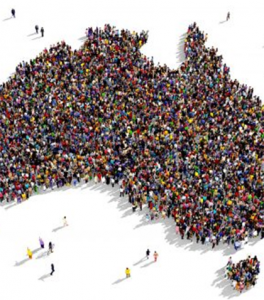Migrants the key to Australia’s future – IGR
Migrants will be key to Australia’s population growth and economic prosperity over the next 40 years, according to the federal government’s 2021 Intergenerational Report (IGR).
The report, which examines long-term economic and budget trends, is the first of the five published since 2002 which points to a reduced level of long-term population growth.
 But the federal government has warned the number of new migrants settling in big cities must be kept “at or below” their capacity to absorb them.
But the federal government has warned the number of new migrants settling in big cities must be kept “at or below” their capacity to absorb them.
The IGR says that for the past decade net overseas migration has accounted for around 60 per cent of the annual increase in Australia’s population but that will rise to about 74 per cent by 2060-61.
The previous IGR, released in 2015, predicted a national population of 37.8 million by 2050 but that has now been scaled back to 35.3 million.
The “most significant” trend causing the lower population forecast is a slump in the fertility rate. The 2015 IGR assumed a rate of 1.9 babies per woman but that has been cut to 1.6 babies per woman. Fertility in Australia has been below the “replacement rate” of 2.1 – the level required to keep the population size steady – since the late 1970s.
Because migrants are, on average, younger than the existing Australian population, migration reduces the average age of the population and slows the rate of population ageing, the report says.
The report said the average skilled migrant contributes more to the federal budget in taxes – and costs the federal budget less in welfare and other payments – over their lifetime than the general population.
It also said skilled migrants also make a significant economic contribution during their lifetime.
“Sustainable migration provides greater certainty for governments, businesses and individuals to plan for the future. Higher migration rates bring forward higher demand for services, natural resources, urban land and infrastructure, which may be in limited supply and vary significantly based on region,” the report said.
Before the COVID-19 pandemic the federal government reduced the number of permanent migration places from 190,000 per year to 160,000. The flow of new migrants has subsequently collapsed due to COVID-19 border closures.
The IGR predicts net overseas migration will recover to 235,000 people per year by 2024-25 and remain at that level in coming decades.
Grattan Institute Chief Executive Officer Danielle Wood said the IGR highlighted Australia’s economic challenges into the future.
“The fallout from COVID means Monday’s 2021 report projects a bigger sea of red ink than the previous 2015 report. It’s a useful reminder that lifting productivity, reforming age-based tax breaks, improving migration and confronting climate change are crucial to leaving a happier legacy for the next generation,” Ms Wood said.
She said the report laid bare what happens when an “ageing population hits up against highly age-skewed spending and tax policies”.
“There are many choices governments can make to put the nation on a better path,” Ms Wood said.
“This means working through the many positive suggestions… to revitalise our health and education systems, improve our tax system, fix planning regimes and make more sensible infrastructure choices,” she said.
“Second, governments should lower barriers to workforce participation for women and older Australians by making childcare more affordable, improving paid parental leave, and revisiting the pension access age and superannuation preservation age,” Ms Wood said.












